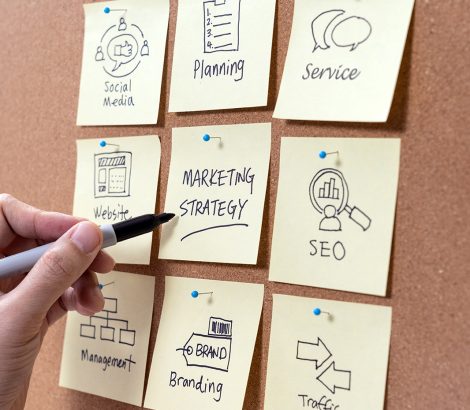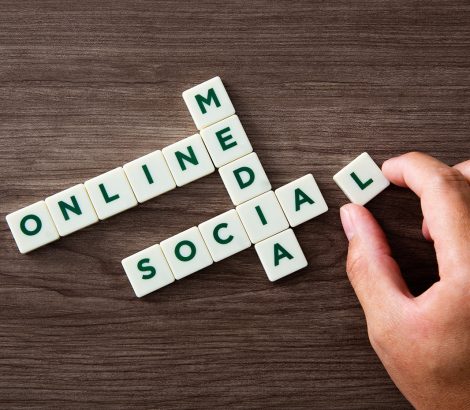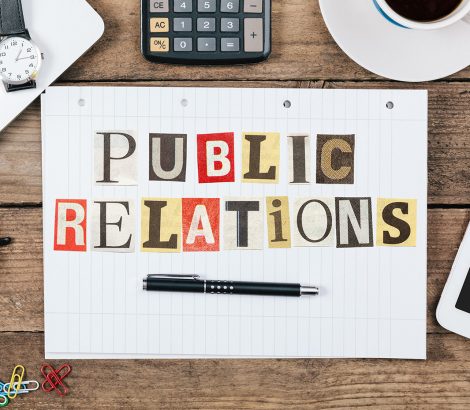In the fast-paced digital age, the role of a graphic designer has become more vital than ever. From creating captivating visuals to enhancing brand identity, designers play a significant part in the success of businesses and organizations. If you’re still on the fence about hiring a visual communicator, this article will shed light on seven compelling reasons to make that decision.
Why a Graphic Designer Matters
Hiring a graphic artist is not merely an option; it’s a strategic move that can transform your business. Below are the reasons why they matter:
1. Unleash Your Brand’s Potential
Your brand is more than just a logo. A skilled visual designer can translate your brand’s essence into compelling visuals that resonate with your target audience. They will ensure consistency in every design element, strengthening your brand’s identity and recognition.
2. Stand Out in a Crowded Market
In a saturated market, standing out is essential. A graphic designer has the expertise to create eye-catching designs that will make your brand distinct. Their creative flair can set you apart from your competitors.
3. Quality Matters
Visual branding specialists are trained to produce high-quality designs. Their attention to detail and dedication to perfection ensures that your visuals are top-notch. This professionalism reflects positively on your brand.
4. Save Time and Resources
While you could attempt DIY designs, it’s often a time-consuming and frustrating process. Hiring a graphic artist allows you to focus on your core business activities, saving you valuable time and resources.
5. Adapt to Evolving Trends
Design trends evolve rapidly. Graphic designers stay updated with the latest trends and technologies, ensuring your designs are contemporary and relevant.
6. Effective Communication
Visual content is a powerful communication tool. Graphic artists excel in conveying your message through visuals, making it more engaging and easier to understand.
7. Versatility and Consistency
Graphic designers are versatile. They can create visuals for various platforms, ensuring consistency in your branding across digital and print media.
Conclusion
In conclusion, hiring a graphic artist is not just a business expense; it’s an investment. They can take your brand to new heights, helping you reach your goals and stand out in the competitive market. With their expertise, you can create a lasting impression on your audience.
FAQs
1. What does a graphic designer do?
A graphic designer creates visual content, including logos, marketing materials, and web graphics, to enhance a brand’s identity and communication.
2. How can I find the right visual communicator for my business?
Start by reviewing their portfolio and assessing their experience in your industry. Personal compatibility is also crucial for a successful collaboration.
3. What is the average cost of hiring a graphic designer?
Costs vary based on experience and the scope of work. On average, freelance visual designer charge between $50 to $100 per hour, while agencies may have different pricing models.
4. Can a graphic designer help with my website’s design and user experience?
Absolutely. Visual communicators can create visually appealing and user-friendly web designs, enhancing the overall user experience.
5. How do I brief a graphic designer effectively?
When briefing a visual designer, be clear about your brand, objectives, and expectations. Providing examples of designs you like can also be helpful.
5. What role does creativity play in a graphic designer’s work?
Creativity is at the heart of a graphic designer’s work. They use their creative skills to conceptualize and execute unique visual solutions for your brand. Whether it’s designing a captivating logo, an eye-catching brochure, or an engaging website, a graphic designer’s ability to think creatively and outside the box is what sets them apart in the world of visual communication. Their creativity ensures that your brand stands out and resonates with your audience.








The Impact of Graphic Design: Reasons Marketing Can’t Thrive Without It
In today’s fast-paced digital landscape, graphic design plays a pivotal role in the success of marketing strategies. It goes beyond aesthetics, weaving a thread of visual storytelling that captures the essence of brands and captivates audiences. From logos and banners to social media posts and website layouts, graphic design is the cornerstone of effective communication. In this blog post, we delve into the significance of graphic design in marketing and how it influences consumer perceptions and business growth.
The Power of Visual Communication
Humans are inherently visual beings. A well-crafted image can convey emotions, messages, and information far more effectively than text alone. Graphic design harnesses this power by blending typography, imagery, color, and layout to create compelling visuals that resonate with audiences. Whether it’s a striking logo that symbolizes a brand’s values or a visually pleasing website that keeps visitors engaged, graphic design enables businesses to communicate their identity and offerings seamlessly.
Building a Strong Brand Identity
Consistency is key in brand building, and graphic design ensures that consistency. A cohesive visual identity, including logos, color palettes, and typography, establishes a brand’s unique persona. Consumers begin to associate these visual elements with the brand’s values and offerings. This familiarity builds trust and loyalty, making customers more likely to choose a brand that resonates with them visually.
Fostering Engagement on Social Media
In the age of social media, grabbing attention in a sea of content is a challenge. Here, graphic design shines as a beacon. Eye-catching visuals stop users mid-scroll, encouraging them to explore the content further. Infographics, quote cards, and visually appealing posts increase sharing and engagement, amplifying a brand’s reach and online presence.
Creating Memorable Impressions
First impressions matter, and graphic design sets the stage for lasting ones. A well-designed website or a thoughtfully crafted business card leaves a mark on potential customers. Professionally designed marketing materials signal credibility and competence, instilling confidence in the audience’s minds.
Graphic Design in Marketing FAQs:
Q1: What role does color play in graphic design for marketing? Color psychology is vital in influencing consumer perceptions. Different colors evoke emotions and associations, allowing brands to convey specific messages.
Q2: Is graphic design only important for online marketing? No, graphic design is essential across all marketing channels. From print materials to digital ads, consistent and compelling design enhances brand recognition everywhere.
Q3: Can bad design negatively impact a business? Yes, poor design can lead to confusion, mistrust, and a lack of interest. It’s crucial to invest in professional graphic design to avoid such pitfalls.
Conclusion:
In the world of marketing, where attention spans are fleeting, and competition is fierce, graphic design emerges as a game-changer. Its ability to tell stories, evoke emotions, and establish strong brand identities is unparalleled. From nurturing engagement to boosting brand loyalty, graphic design plays a multifaceted role in creating successful marketing campaigns. As businesses continue to adapt to changing trends, one thing remains certain: the importance of graphic design in marketing will only continue to grow. So, whether you’re a startup or an established brand, investing in exceptional graphic design is investing in your own success.
What are the 4 Elements of Branding? A Comprehensive Guide
Branding plays a pivotal role in the success of any business. It goes beyond just a logo or a tagline – it encompasses the entire essence and perception of your company. In this comprehensive guide, we’ll delve into the four fundamental elements of branding that can help your business stand out and make a lasting impact.
Element 1: Brand Identity
Your brand identity is the visual representation of your company. It includes your logo, color palette, typography, and overall design. A consistent and well-crafted brand identity creates instant recognition and fosters a sense of trust among your audience. Remember, your brand identity should align with your company’s values and mission.
Element 2: Brand Messaging
Brand messaging refers to the language and tone you use to communicate with your audience. It encompasses your tagline, mission statement, and the way you convey your brand’s personality through words. Effective brand messaging conveys your unique value proposition and resonates with your target audience, creating a strong emotional connection.
Element 3: Brand Experience
The brand experience is the sum of all interactions a customer has with your brand. It includes everything from visiting your website and using your products/services to engaging with your customer support. A positive brand experience leaves a lasting impression and encourages customer loyalty and advocacy. Consistency across all touchpoints is key to a memorable brand experience.
Element 4: Brand Consistency
Brand consistency involves maintaining uniformity across all aspects of your brand. This applies to visuals, messaging, and customer experience. Consistency builds trust and reliability, making your brand easily recognizable and relatable. Any inconsistency can lead to confusion and dilute your brand’s impact.
FAQs About Branding
Q1: Why is brand consistency important? Brand consistency ensures that your audience receives a coherent and unified message, which fosters trust and reliability.
Q2: How can I develop a strong brand identity? Start by understanding your company’s values and target audience. Then, design a visual identity that reflects these aspects consistently.
Q3: Can branding evolve over time? Yes, branding can evolve to stay relevant and align with changing market trends, but core elements should remain consistent.
Conclusion
In a competitive business landscape, effective branding sets you apart from the crowd. By understanding and implementing the four essential elements of branding – brand identity, brand messaging, brand experience, and brand consistency – you can create a powerful and enduring brand that resonates with your audience, a good example of that is Nike, Apple, and Coca-Cola. Remember, a well-crafted brand is an investment in your business’s long-term success.
Incorporate these elements thoughtfully, and watch as your brand gains recognition, loyalty, and a distinct voice in the market. If you’re ready to make a lasting impact, start shaping and enhancing your brand’s identity today!
Unlocking Success: The Dynamic 2 of Social Media Marketing and Graphic Design
In today’s fast-paced digital landscape, effective social media marketing is indispensable for businesses aiming to thrive online. While content and strategy play pivotal roles, one cannot underestimate the power of visual appeal. This is where graphic design steps in as the unsung hero of social media marketing.
The Visual Powerhouse
Human beings are naturally drawn to visuals. According to studies, the human brain processes images 60,000 times faster than text. This instant impact is what makes graphic design a vital tool for capturing the fleeting attention of social media users.
With the rise of platforms like Instagram, Pinterest, and TikTok, visual content reigns supreme. A strategically designed visual can convey emotions, stories, and messages instantaneously, helping brands establish a memorable and relatable online presence.
Building Brand Identity
Consistency is key when it comes to branding. Graphic design plays a pivotal role in creating and maintaining a cohesive brand identity across various social media platforms. The right color schemes, typography, and design elements can evoke specific feelings and associations, making the brand easily recognizable.
A well-crafted logo, for instance, can become synonymous with the brand itself. Think of the Nike Swoosh or the golden arches of McDonald’s – these iconic visuals are inseparable from their respective brands. Graphic design ensures that every piece of content shared reflects the essence of the brand.
Fostering Engagement
Social media is not a one-way street. Interaction and engagement are fundamental to its success. Compelling graphics encourage users to like, comment, share, and click through. Infographics, for instance, are a powerful way to present information in an easily digestible and shareable format.
Moreover, graphics have the potential to tell a story within seconds. A captivating image can evoke emotions, spark conversations, and motivate users to take action. This engagement translates into increased visibility and reach, driving organic growth.
FAQs About Graphic Design in Social Media Marketing
Q: Is graphic design only about aesthetics? A: No, graphic design goes beyond aesthetics. It involves the strategic use of visuals to convey messages, evoke emotions, and create a memorable brand presence.
Q: Can I use stock images for my social media posts? A: While stock images can be convenient, using original graphics tailored to your brand is recommended for a unique and authentic online identity.
Q: What software can I use for graphic design? A: There are various options available, ranging from Adobe Creative Suite to Canva, suitable for both beginners and professionals.
Q: How often should I update my social media graphics? A: Regular updates keep your content fresh and engaging. Aim for consistency while adapting to trends and special occasions.
Conclusion
In the ever-evolving landscape of social media marketing, graphic design emerges as an indispensable tool for success. From capturing attention to fostering engagement and building brand identity, the visual elements created through graphic design have the potential to shape a brand’s online journey. By investing in compelling visuals, businesses can forge deeper connections with their audience, ultimately driving growth and success in the digital realm.
Graphic design isn’t just about making things look pretty; it’s about crafting a visual language that resonates with your target audience. It’s about conveying your brand’s personality and values through imagery, fonts, and colors. In today’s hyper-competitive digital world, standing out is crucial, and graphic design can help you do just that.
When done right, it’s not just a background player; it’s a star performer that can elevate your social media marketing efforts to new heights. So, whether you’re just starting or looking to revamp your online presence, remember the power of graphic design. It might just be the missing piece that takes your social media marketing from ordinary to extraordinary.
Why is graphic design important in public relations?
In the dynamic world of public relations, where conveying messages effectively is paramount, the role of graphic design should never be underestimated. With its ability to communicate complex ideas visually, plays a pivotal role in enhancing the impact and resonance of public relations campaigns.
The Power of Visual Communication
Visuals possess a unique ability to capture attention and convey emotions more effectively than words alone. In the realm of public relations, where capturing and retaining the audience’s attention is crucial, graphic design acts as a powerful tool to achieve this. Engaging visuals, whether in the form of infographics, banners, or social media posts, can effectively convey messages, making them more memorable and shareable.
Creating a Lasting Impression
First impressions matter, especially in the world of public relations. A thoughtfully designed logo, an aesthetically pleasing website, or an eye-catching brochure can establish a positive perception of a brand. GD helps in creating a visual identity that resonates with the target audience, allowing brands to convey their values and personality effortlessly.
FAQs About Graphic Design in Public Relations
1. How does GD impact public relations?
Graphic design visually enhances messages, making them more compelling and shareable. It helps establish brand identity, making the brand memorable and recognizable.
2. What are the benefits of incorporating GD into PR campaigns?
Integrating graphic design elements increases engagement, makes information easier to understand, and boosts the overall effectiveness of PR campaigns.
3. What role does consistency in design play in PR?
Consistency in design builds brand recognition. Using consistent design elements across various PR materials fosters trust and credibility among the audience.
Conclusion
In the ever-evolving landscape of public relations, graphic design emerges as a vital tool that bridges the gap between messages and their intended audience. Its capacity to convey ideas visually, establish brand identity, and evoke emotions makes it an indispensable component of successful PR campaigns. By integrating strategic graphic design, brands can amplify their communication efforts, leave a lasting impression, and ultimately forge stronger connections with their audience. So, the next time you embark on a PR journey, remember that graphic design is not just a visual aid – it’s a key to unlocking unparalleled success.